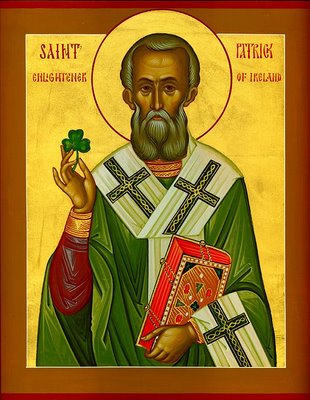The missional church is more than a passing fad or a new idea. As is often repeated, it’s not so much that the church has a mission but that God’s mission has a church. The Bible and church history should be read as a series of hits and misses trying of people trying to join up with what God is doing.
Scattered throughout history you occasionally encounter a story like St. Francis or Dirk Willems that sound like scripture itself. These are women and men who could say alongside Paul “Follow me as I follow Christ.”
The situation of the church is shifting in the West from a people of cultural power to a people on mission. Patrick’s legend offers five rules for those who are ready to join.

1. Persecution can lead to passion
At age 16, Patrick was a carefree teenager who had the bad luck to be kidnapped by pirates. He was sold into slavery, where he worked as a shepherd. Six years later, he heard a voice tell him to flee, and he escaped back to Britain. He spent years studying Christianity until he had a vision of a man begging him to return to Ireland.
Although Patrick had every right hate Ireland, he returned freely and gladly. The difficulties of life can either make us cynical or passionate. Patrick provides a shining example of how the most difficult situation can become the beginning of a great mission.
2. Start by Learning to Listen
At the time Patrick became a slave he was not yet a follower of Jesus. For years, he wandered in the quiet, with only his sheep and his prayers. In that time he learned to listen to God, and felt a call to follow the way of Jesus.
We won’t all get six years of shepherding to teach us how to pray. However, if we want to our mission to make a difference, we will have to make time for the silence and solitude in which spiritual growth can occur.
3. Conversion happens twice
Patrick’s first conversion was spiritual from his carefree living to the way of Jesus. Patrick’s second conversion was cultural, where he took on the language and custom of the Celts he was sent to live among.
Like Jesus became a man, Patrick became an Irishman. If we are going to live on mission, we should expect to go through a second conversion to the cultures and neighborhoods we call home.
4. Bring out the best
Legend tells of how Patrick used a three leaf clover to explain the Trinity. He had a deep understanding for the passion and chaos that made the Celtic people celebrated and feared throughout the Roman empire. Rather than simply bemoan the darkness he found their, he transformed it. As Thomas Cahill, author of How the Irish Saved Civilization, has said:
In becoming an Irishman, Patrick wedded his world to theirs, his faith to their life…Patrick found a way of swimming down to the depths of the Irish psyche and warming and transforming Irish imagination – making it more humane and more noble while keeping it Irish.
Throughout the centuries, missionaries have gotten caught up in the game of cultural imperialism. Patrick’s example shows that the way of Jesus need not destroy a local culture, but brings out the best in it.

5. Build community, and evangelization and cultural transformation will come in time.
In the decades and centuries to come, bands of Irish monks led by Patrick’s successors Columcille and Columbanus wandered throughout Europe. Europe was apart with the fall of the Roman empire. Irish monks established Abbeys, churches and gardens. Often, communities would crop up, eventually becoming villages and cities, with the church as the center of the culture.
As George Hunter has noted:
[The] Celtic model for reaching people: (1) establish community with people or bring them into the fellowship of your community of faith; (2) within fellowship, engage in conversation, ministry, prayer, and worship; and (3) in time, as they discover that they now believe, invite them to commit.
…Celtic Christians usually evangelized as a team— by relating to the people of a settlement; identifying with the people; engaging in friendship, conversation, ministry, and witness—with the goal of raising up a church in measurable time.
This “celtic way of evangelism” is not so much a method as it is the natural results of knowing people and showing them the love of Jesus.
As you enjoy today’s celebrations, ask yourself the question, how would Patrick do respond to our situation today?










 Tweets
Tweets